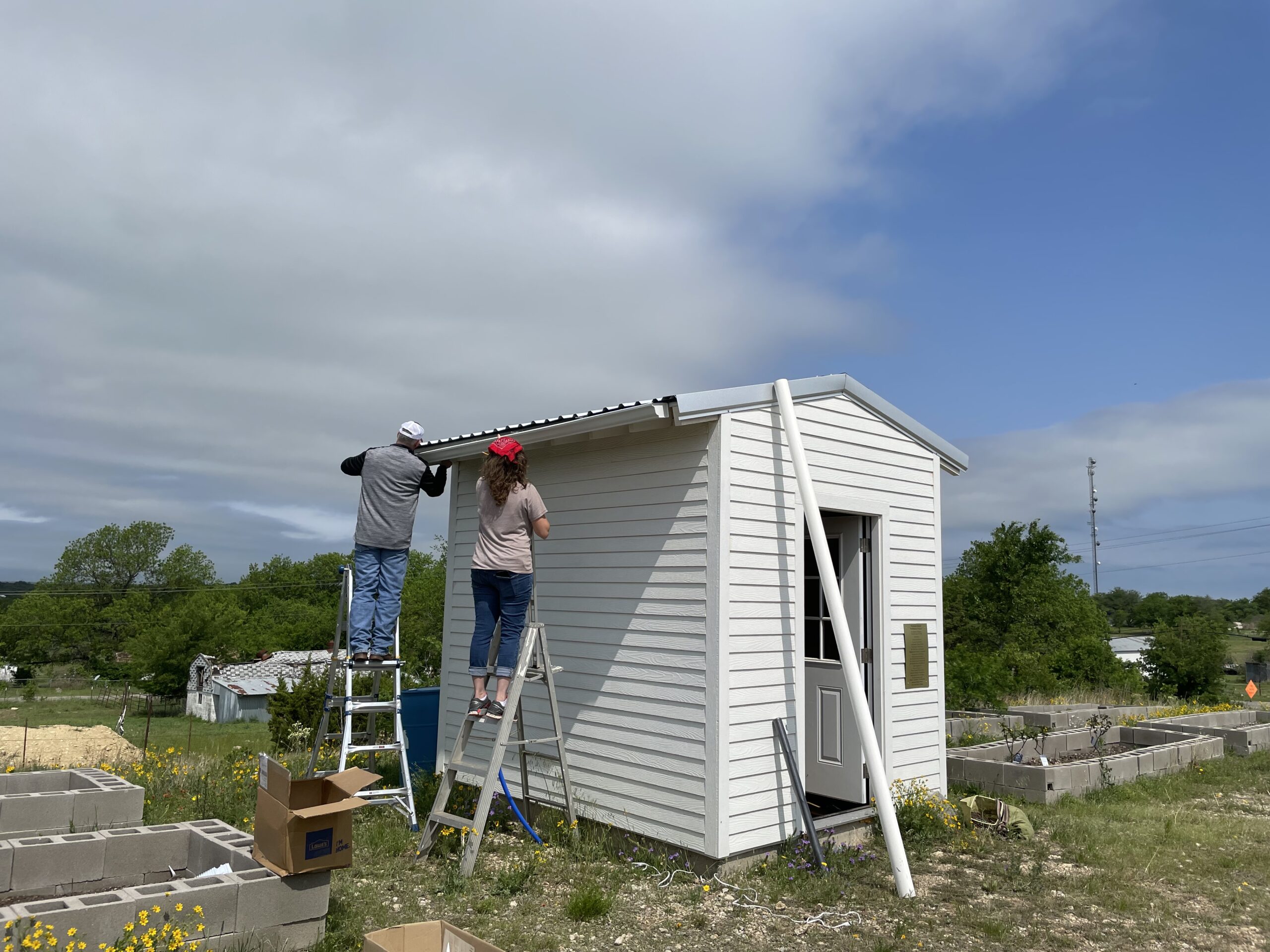
At the Agnes Schoolhouse, everything old is new again.
Community volunteers are lovingly restoring the nearly 100-year-old schoolhouse on a hill and turning it into a thriving community center, bringing new life to an abandoned landmark.
Located in the shadow of Springtown, the Agnes Schoolhouse is a place where residents can buy fresh produce from a “Garden on the Go,” or attend a family reunion where they can celebrate their past and future.
Thanks to the Tarrant Regional Water District, visitors can also see how to build a system that captures rainwater and uses it for irrigation, a tradition that saves water and protects the watershed by cutting down on erosion.
Starting in 2022, TRWD, along with the Texas A&M AgriLife Extension Service, built two rainwater harvesting systems – including installation of guttering and rain barrels – on the schoolhouse and its well pump house.
“It shows how easy it can be to build a rain harvesting system from things you can buy at Home Depot or a Tractor Supply store,” said Aaron Hoff, TRWD’s watershed program manager. “It’s not hard, you don’t need an engineering degree to do this.”
Christina Adcock, who lives down the street from the Agnes Schoolhouse and has led the efforts to restore it, said the center was looking for a way to cheaply irrigate its community gardens. Rainwater harvesting fits the bill.
“Water is important to us out here and every little bit counts,” Adcock said.
Saving water, and protecting the watershed, is especially important as North Texas’ population grows and stretches out into the rural areas, or exurbs. These communities feature low housing density, but still bring with it some suburban ills such as increased water demand and covering over soil that used to absorb rainwater with structures and impervious surfaces.
What used to be Agnes is a good example. Located about 18 miles north of Weatherford and eight miles west of Springtown, it originally was settled in the 1870s. At one time it had a blacksmith shop, a general store, a cotton gin, a post office and a school.
The town never got bigger than 100 residents and people began going to Springtown to shop and attend school. The three-room schoolhouse, this version built in 1927, stopped serving students in 1946, Adcock said.
But now, Springtown is stretching out and taking in Agnes, with its newer residents being lured by the rural, spacious-living atmosphere. Many of them have never lived on a farm. There is a disconnect with that way of life.
“Historically, going back 50 or 60 years, a lot of rural areas caught rain runoff and put it in cisterns. As people got more urbanized, they forgot about the importance of making good uses of our natural resources, including rainwater,” said Jay Kingston, a Texas AgriLife extension agent.
“There is a loss of knowledge of the rural way of life and it’s having an impact on the watershed,” Kingston said.
Adcock wanted to re-create a sense of that rural community with the schoolhouse, which is still publicly owned, and had been a community center before. But it had fallen into disrepair.
Adcock made some phone calls to see what she could do with the property. She now works with a volunteer board.
“I wanted it to be a place where the community can come together like it used to,” Adcock said, a place with events for kids as well as canning, sewing and beekeeping classes for the adults.
The group has restored the property little by little through donations.
A well was donated for the gardens. Concrete bricks were provided by the local hospital to build the community education gardens. A young man working on his Trail Life project built the well house and storage shed.
A board member put on a new metal roof. It was when that was done that Adcock reached out to TRWD about doing rainwater harvesting. The idea is to make the community center as self-supporting as possible, she said.
“This is a unique project because of the public access to it. Not many places are forward thinking enough to put in a system like this that other people can learn from,” Kingston said.
TRWD started by designing a rainwater harvesting system that would collect the rainfall flowing from the rooftop of the well pump house.
The pump house was outfitted with gutters and downspouts that fed rainwater into three, 55-gallon barrels. During a class, the idea was to show residents they could do this on a small scale, Adcock and Kingston said.
The cost for a project like this, using existing gutters, is about $75, he said.
Then, TRWD tackled the schoolhouse, a much bigger project. It took more planning and the rain barrels were replaced with a 2,500-gallon cistern. It’s the kind of layout that may be connected to a large shed, or barn.
TRWD built out part of the system prior to the event and had people who attended the class put the pieces together, said Katie Myers, TRWD’s Rural Programs Coordinator in the Watershed Protection Division.
“Everyone gets to feel involved. They get a little more hands-on experience and they get to touch things and ask questions. I think people enjoyed having that community buildout,” she said.
TRWD said the Agnes Schoolhouse has generated phone calls about rain harvesting systems. The ultimate goal of the project is to do whatever is possible to protect the watershed in the growing exurban areas.
“Rain harvesting benefits water quality because collecting the rain water off of these impervious surfaces and putting it to good use prevents it from being runoff, which helps abate erosion off of a property,” Myers said.
“We’re trying to keep sediment out of the reservoir and if we can capture water that would otherwise become runoff, we’ve accomplished that goal,” she said.

